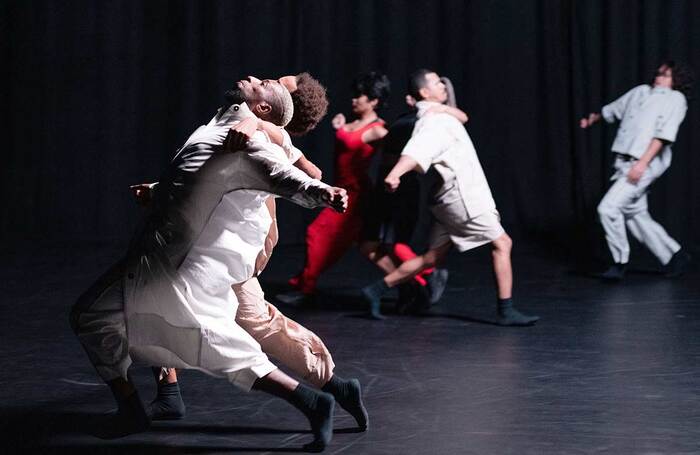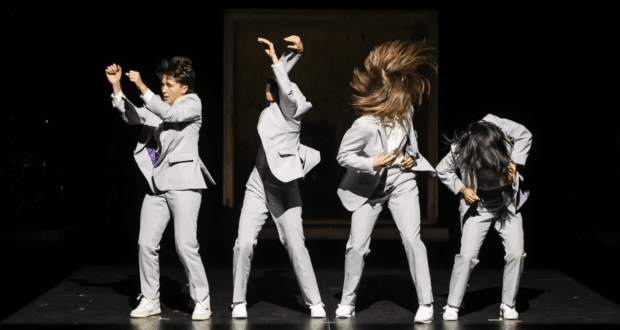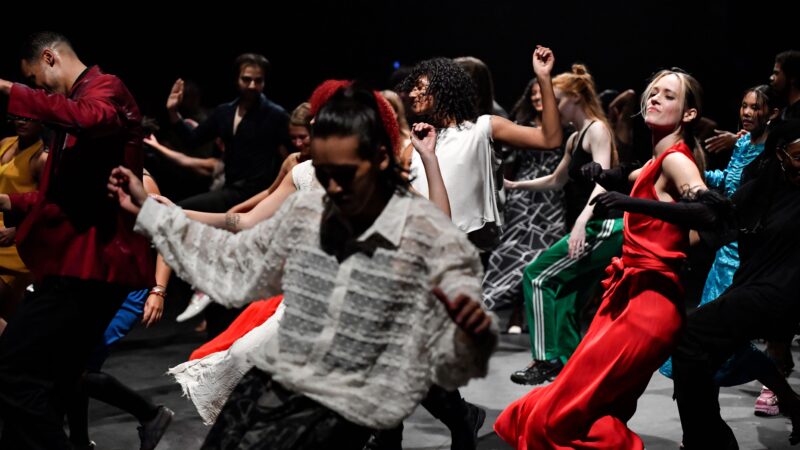Grupo de Rua by Bruno Beltrão at Sadler’s Wells
In 1996 Bruno Beltrão (only 16) created Grupo de Rua with his friend Rodrigo Bernardi. The only thing I created at 16 was an emotional collage to my “platonic” best friend, never mind I digress. Little did these teenagers know the highs the company would soar to: touring around the world, and receiving the New York Dance and Performance award twice. Infusing Hip Hop with the experimental process of contemporary dance has served the company well so far.
But does a worthy political discourse translate well into a piece of moving, breathing crucially silent dance? Well, we’ll find out, well I found out, and you will now… find out I mean, you get the picture.
A bare stage rather mirrors the 2/3 filled Sadler’s Wells auditorium. Although the biting and sudden arrival of winter’s night might have something to do with it, people dying of frostbite on replacement bus services, etc… To the industrial but strangely suburban sounds of lawnmowers and machinery four dances in Marcelo Sommer’s loose and vaguely anime-inspired costumes move twitching into the light.
Throughout the focus is very much… the dance. A chorus of chirping recorders is the closest we come to any recognisable music (lucky us). Renato Machado’s lights switch the space with spots, projected whitewashes, and an unexplained strip of LED screen upstage left. It’s the movement of the ten performers that not only takes centre stage but is pretty much the only thing on offer.
And what movement, what movement? I’ll be serious now. Beltrão is knowingly encompassing, mixing the fearful angular aggression of krumping with bursts of breakdance. The confutations are random, morphing inexplicably, with dancers diving off stage backs arched in pain. It’s a world of untenable postures, obsessive hand movements, and tapping beats of delusion on bodies bent and scuttling like linen-lined crustaceans.
The controversial reign of Jair Bolsonaro is the basis for the piece, and this dismantling of shape, form and even the lightest sense of narrative/community is interesting. However, would I understood this theme without the factsheet helpfully provided by my PR pal? Not a smidge!
Nothing is made easy, or even sadly enjoyable for the audience. No use of Bolsonaro’s speeches, terrible statements, or even smiling evil mug is projected (despite the obvious ability). So, the audience is just expected to work this out themselves (lucky usx2)
Moments jump out and do stay in my mind, thematical confusion aside. A group set of handstands collapsing into an odd shape, head on the floor and one leg extended like the beak of a ground-bound bird. The inhuman shapes shuffle menacingly across the stage. Equally a pas de trois between the male dancers has the unmissable energy of b-boy coursing through its veins. Everything (a little like lovemaking) is so much better sped up, but the rest of the hour is painfully haphazard and unrelenting.
Despite Beltrão choreographic cherry-picking and the dancer’s physical flare what unfolds is a forgettable carnage of flailing limbs with little repeated movement or overall sense of continuity. The desperation for cross-genre exploration leaves little room for us the audience, pushing us out into the frigid air of Islington’s night: Confused, bemused, and longing (and rarely I say this) for something simple, pretty, and deeply shallow.
Snatch tickets to another show, click here!



